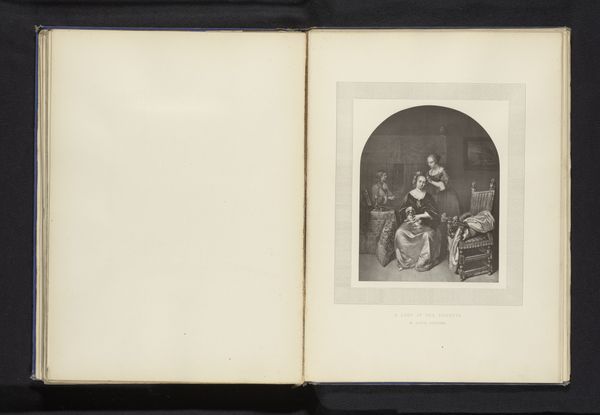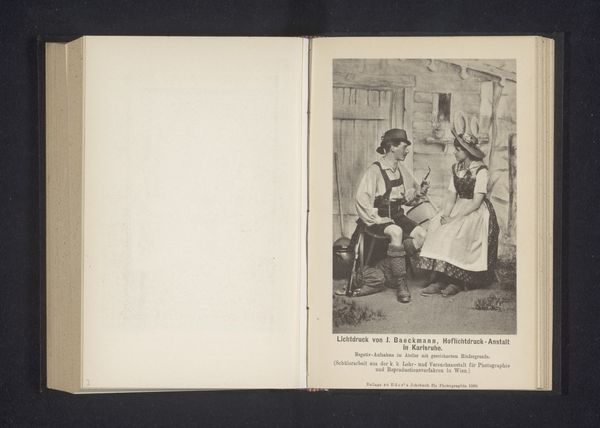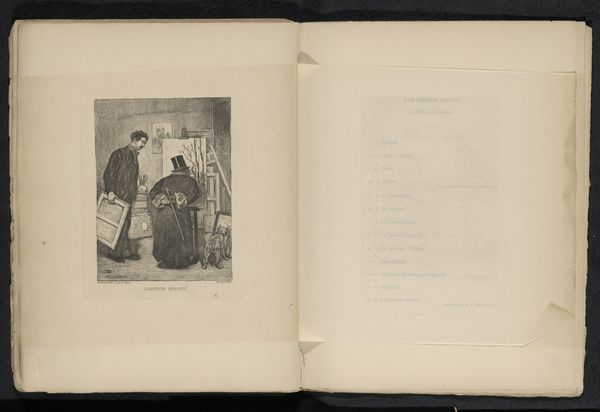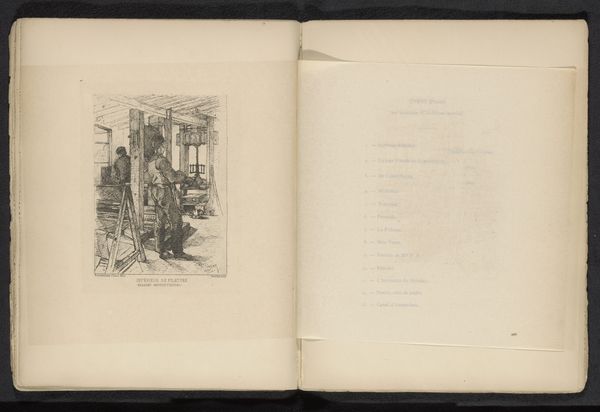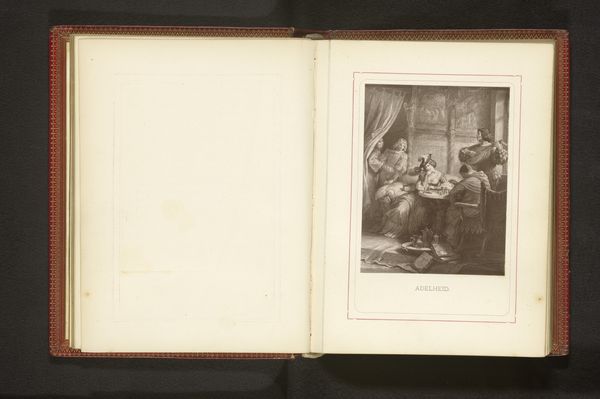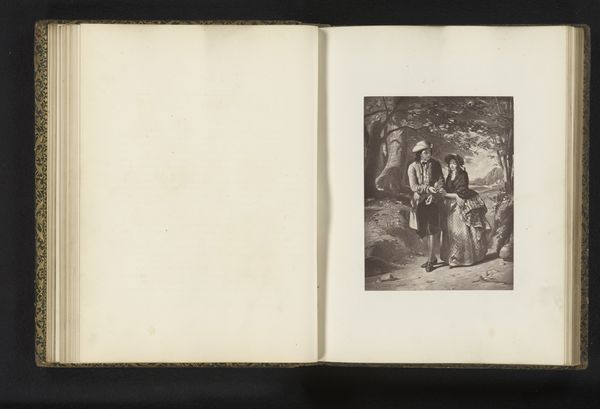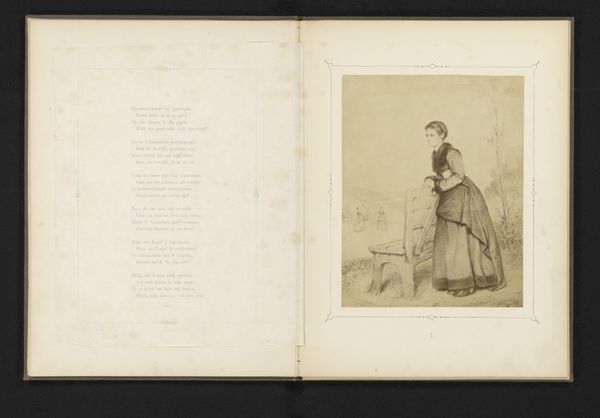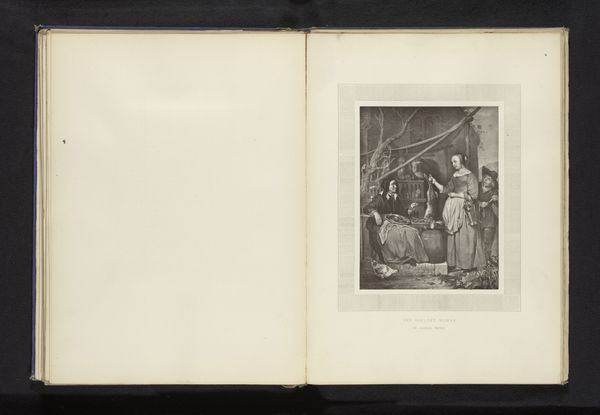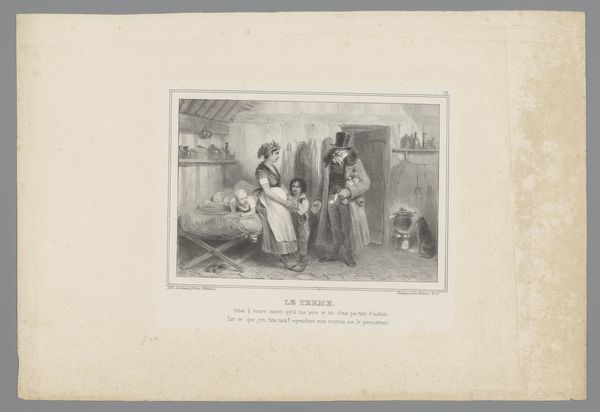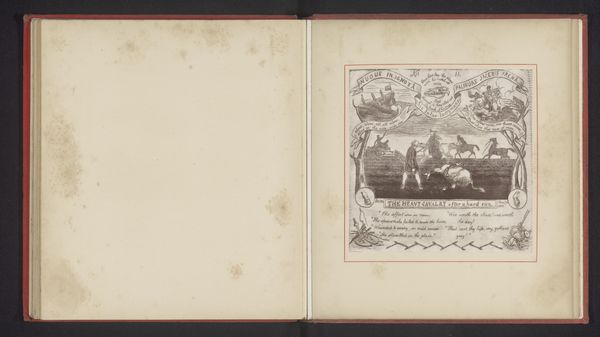
Dimensions: height 180 mm, width 115 mm
Copyright: Rijks Museum: Open Domain
Curator: What strikes me immediately about this print is its somewhat somber atmosphere. The figures are so delicately rendered but the scene, even without context, feels charged with a certain anxiety. Editor: This is "Geld tellende man en een vrouw voor een raam" – "Man Counting Money and a Woman Before a Window" – a pre-1869 engraving by Armand-Auguste Caqué. The work is on display here at the Rijksmuseum and gives us a fascinating look at how the Romantic movement was translated into printmaking during the nineteenth century. I’m especially interested in the printmaking techniques used. The cross-hatching in the figures clothing, and the way that layering creates this mood of heavy anxiety, can give insight to not only how a consumer views this type of print, but how art/products become intertwined in a social, and monetary marketplace. Curator: That interplay of light and shadow really does pull you in. Do you think that Romanticism in prints like this would have influenced some of the more modern iterations, in the popular press? Editor: Absolutely. Consider the narrative built within a print – you have figures, context and themes. This evokes discussions around socio-economic struggles during the era. Gender roles are definitely worth taking a look at as well: what does it mean to show the woman next to the window, the male protagonist taking center stage as a money counter. Who has the power to be center and who fades back in the shadow, next to the window? Curator: So the materials used, and the methods of reproduction, gave these images more opportunities to connect with an audience than ever before. Were people eager to examine themes and cultural concerns back then? Editor: Definitely. Prints democratized art in a way. They offered an accessible commentary on social class and cultural concerns. The layering and line variation could subtly communicate political undertones regarding power. Even in seemingly apolitical scenes such as this. Curator: It really is quite a loaded piece when you start considering all its possibilities. I wonder, do prints such as these make their creators artists or manufacturers? Perhaps a little bit of both? Editor: In a way this reminds me of how labor and gender intertwine through print as both craft and industry. I appreciate the ways art can challenge social narratives.
Comments
No comments
Be the first to comment and join the conversation on the ultimate creative platform.
